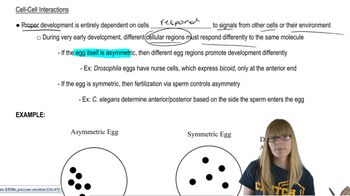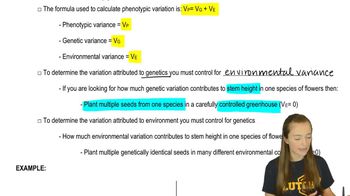Here are the essential concepts you must grasp in order to answer the question correctly.
Sickle-Cell Anemia
Sickle-cell anemia is a genetic blood disorder caused by a mutation in the hemoglobin gene, leading to the production of abnormal hemoglobin known as hemoglobin S. This mutation results in the distortion of red blood cells into a sickle shape, which can cause blockages in blood vessels, pain, and various complications. Understanding this condition is crucial for appreciating the genetic contributions made by researchers like Pauling and Ingram.
Recommended video:
Linus Pauling's Contribution
Linus Pauling was a pioneering chemist who, in the 1940s, used electrophoresis to demonstrate that sickle-cell anemia was associated with a specific molecular change in hemoglobin. He proposed that the disease was caused by a single amino acid substitution in the hemoglobin protein, marking one of the first instances of linking a genetic mutation to a specific disease phenotype. This work laid the groundwork for molecular genetics and the understanding of genetic diseases.
Recommended video:
Harold Ingram's Contribution
Harold Ingram expanded on Pauling's findings by conducting further studies that confirmed the relationship between the sickle-cell trait and the specific mutation in the beta-globin gene. Ingram's research provided a clearer understanding of the genetic basis of sickle-cell anemia, demonstrating how the mutation leads to the production of abnormal hemoglobin. His work was instrumental in establishing the field of molecular genetics and the concept of genetic disease inheritance.
Recommended video:





